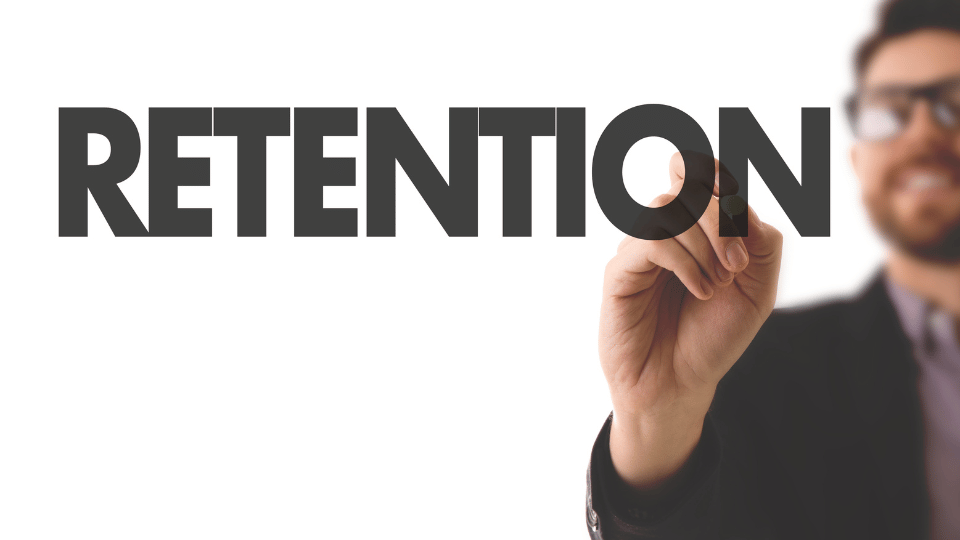Leveraging Predictive Analytics for Aerospace Talent Retention

In the ever-evolving landscape of the aerospace industry, retaining top talent is as crucial as recruiting it. The sector faces unique challenges, including high turnover rates and a competitive job market. These challenges are compounded by the rapid technological advancements and the specialized skill sets required in the industry. Leveraging predictive analytics can revolutionize talent retention strategies, transforming them from reactive to proactive measures. This article delves into how predictive analytics can be harnessed to enhance employee retention, reduce turnover, and ensure a stable workforce in the aerospace industry. By adopting a data-driven approach, aerospace companies can gain a competitive edge in maintaining their talent pool.
Understanding the Importance of Talent Retention in Aerospace

Employee retention in aerospace is not just about keeping employees; it's about maintaining the specialized skills and expertise that drive the industry forward. The knowledge and experience embedded within the workforce are crucial for innovation and maintaining a competitive edge. Aircraft mechanics and avionics technicians, in particular, are invaluable assets whose loss can lead to significant operational disruptions. Their technical expertise ensures the safety and efficiency of aerospace operations, making them indispensable to the industry.
The Cost of Turnover
Turnover in the aerospace sector is costly. It encompasses not only the direct costs of recruitment and training but also the indirect costs related to decreased productivity and morale. The loss of institutional knowledge and the time it takes for new hires to reach full productivity further exacerbate these costs. According to industry reports, replacing a skilled aerospace employee can cost up to twice their annual salary. This makes effective talent retention strategies not just beneficial but essential. Moreover, frequent turnover can damage company culture and employee morale, leading to a negative cycle of continued departures.
The Role of Predictive Analytics in Talent Retention
Predictive analytics involves using historical data, statistical algorithms, and machine learning techniques to predict future outcomes. By analyzing past trends and patterns, companies can develop insights that guide future decisions. In the context of talent retention, it means identifying patterns and trends that precede employee turnover and addressing them proactively. This proactive approach allows companies to anticipate challenges and implement solutions before problems escalate.
Identifying At-Risk Employees
Predictive analytics can help identify employees at risk of leaving by analyzing various factors such as job satisfaction scores, engagement levels, workload, and even external market conditions. These insights can reveal underlying issues that may not be immediately apparent. For instance, a sudden spike in overtime hours or a drop in job satisfaction surveys can be early warning signs. By predicting these risks, HR managers can intervene with targeted retention strategies, such as offering additional training, adjusting workloads, or providing career development opportunities, thereby reducing turnover rates. Early intervention can improve employee satisfaction and loyalty, fostering a more committed workforce.
Implementing Predictive Analytics in Aerospace

Data Collection and Integration
The first step in leveraging predictive analytics is data collection. Aerospace companies must gather data from various sources, including HR records, performance reviews, and employee surveys. Additional data from industry trends and economic indicators can further enrich the analysis. Integrating this data into a centralized system is crucial for effective analysis, enabling seamless data access and manipulation. This integration helps to ensure that all relevant data points are considered, providing a comprehensive view of the workforce.
Building Predictive Models
With data in hand, the next step is to develop predictive models. These models analyze historical data to identify patterns and correlations that indicate potential turnover risks. For example, they may find that employees who have not received a promotion within a certain timeframe are more likely to leave. The models can also incorporate external factors such as industry trends and economic conditions. By continuously refining these models, companies can enhance their predictive accuracy and tailor their retention strategies accordingly.
Continuous Monitoring and Adjustment
Predictive analytics is not a one-time effort; it requires continuous monitoring and adjustment. As new data becomes available, models must be updated to reflect changing conditions. This ongoing process ensures that retention strategies remain relevant and effective. Companies should establish feedback loops to evaluate the impact of their interventions and make necessary adjustments. By fostering a culture of continuous improvement, aerospace companies can maintain a dynamic and resilient workforce strategy.
Real-World Applications of Predictive Analytics in Aerospace
Several aerospace companies have successfully implemented predictive analytics to enhance their talent retention strategies, setting benchmarks for the industry.
Case Study: Lockheed Martin
Lockheed Martin, a leader in aerospace and defense, has adopted predictive analytics to reduce turnover among its technical staff. By analyzing patterns in employee data, they identified key factors contributing to turnover, such as lack of career development opportunities and work-life balance issues. With these insights, Lockheed Martin devised tailored retention programs, focusing on personalized career paths and flexible work arrangements. The company then implemented targeted interventions, resulting in a significant reduction in turnover rates. These efforts not only improved retention but also boosted employee morale and engagement.
Case Study: Boeing
Boeing has also embraced predictive analytics to improve employee retention. By leveraging data from various sources, including employee feedback and performance metrics, Boeing developed models to predict which employees were most at risk of leaving. The insights gained enabled Boeing to focus on enhancing engagement and career development, creating a supportive environment that values employee growth. The company then focused on enhancing engagement and career development, leading to improved retention rates and a more stable workforce. Such proactive measures have helped Boeing maintain its position as a leader in the aerospace industry.
Benefits of Predictive Analytics for Aerospace Talent Retention
Proactive Talent Management
Predictive analytics allows companies to shift from reactive to proactive talent management. Instead of addressing turnover issues after they occur, companies can anticipate and mitigate them before they become problematic. This proactive stance enables organizations to allocate resources more efficiently and develop strategic initiatives that address the root causes of turnover. By being ahead of the curve, companies can create a more stable and engaged workforce.
Enhanced Employee Engagement
By identifying and addressing the factors contributing to turnover, predictive analytics enhances employee engagement. Employees who feel valued and see a clear career path are more likely to remain with the company. Engagement initiatives can be tailored to meet the specific needs of different employee groups, fostering a culture of inclusion and growth. This personalized approach strengthens the employee-employer relationship and can lead to higher job satisfaction and loyalty.
Improved Operational Efficiency
Retaining skilled employees leads to improved operational efficiency. Experienced workers are more productive, require less supervision, and contribute to a positive work environment, all of which are crucial in the high-stakes world of aerospace. The continuity of knowledge and expertise allows for smoother operations and innovation. This stability not only enhances productivity but also strengthens the company's ability to respond to industry challenges and opportunities.
Challenges and Considerations
While predictive analytics offers significant benefits, it's important to acknowledge the challenges involved. Implementing these systems requires careful planning and consideration of various factors.
Data Privacy Concerns
Handling employee data requires strict adherence to privacy regulations. Companies must implement robust data protection measures to safeguard sensitive information and maintain employee trust. Transparency in data usage and clear communication with employees about how their data is used are vital for building trust. Compliance with regulations such as GDPR is essential to avoid legal repercussions and protect employee rights.
Bias and Fairness
Predictive models must be designed to avoid bias. Ensuring fairness in the algorithms used is crucial to prevent discrimination and promote an inclusive workplace. Companies should regularly audit their models for bias and involve diverse teams in the model development process. By prioritizing fairness, organizations can foster a culture of inclusivity and ensure that all employees are treated equitably.
Conclusion
Predictive analytics represents a powerful tool for enhancing talent retention strategies in the aerospace industry. By identifying at-risk employees and addressing the root causes of turnover, aerospace companies can maintain a stable and skilled workforce. As the industry continues to evolve, leveraging data-driven insights will be key to staying competitive and ensuring long-term success. Through proactive management and continuous improvement, predictive analytics can transform the way aerospace companies retain their most valuable asset—talent. By embracing these technologies, aerospace companies can not only improve retention but also foster a culture of innovation and excellence.
